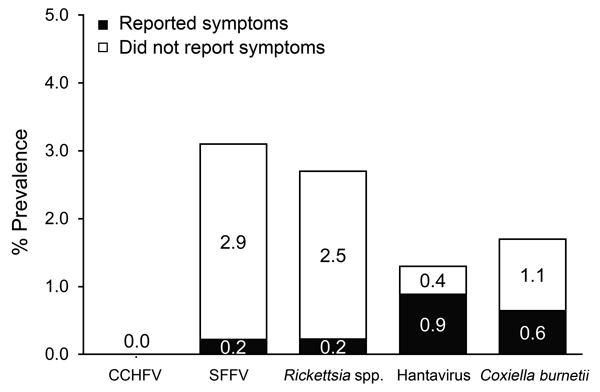Volume 20, Number 12—December 2014
CME ACTIVITY - Research
Seroconversion for Infectious Pathogens among UK Military Personnel Deployed to Afghanistan, 2008–2011
Figure 2

Figure 2. Percentages of UK service personnel who seroconverted to 1 of 5 infectious pathogens who reported feeling unwell or did not report illness during deployment to Helmand Province, Afghanistan, March 2008–October 2011. A total of 90 (19.3%) of 467 deployed service members reported feeling unwell during deployment. CCHFV, Crimean-Congo hemorrhagic fever virus; SFFV, sandfly fever virus.
Page created: November 18, 2014
Page updated: November 18, 2014
Page reviewed: November 18, 2014
The conclusions, findings, and opinions expressed by authors contributing to this journal do not necessarily reflect the official position of the U.S. Department of Health and Human Services, the Public Health Service, the Centers for Disease Control and Prevention, or the authors' affiliated institutions. Use of trade names is for identification only and does not imply endorsement by any of the groups named above.